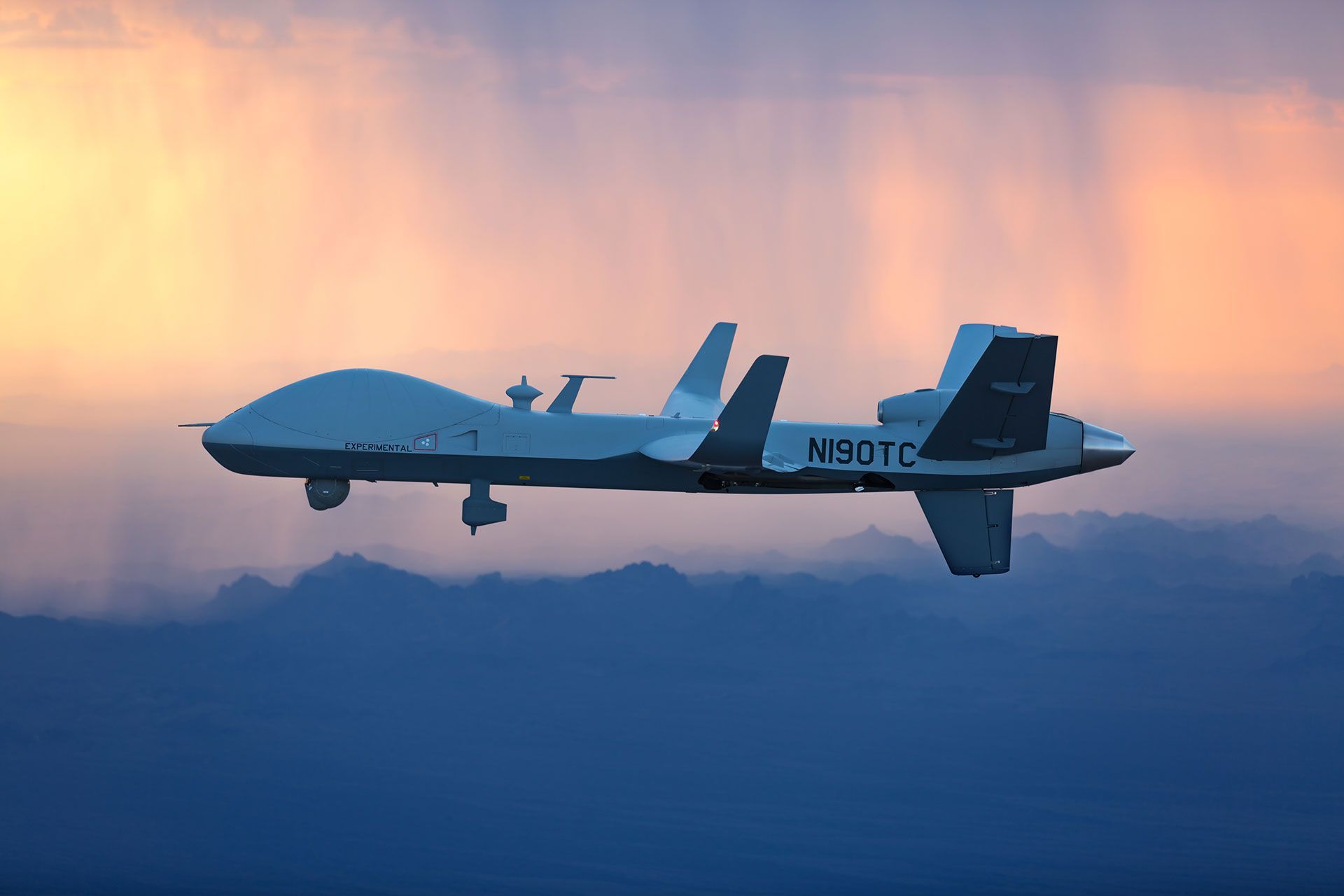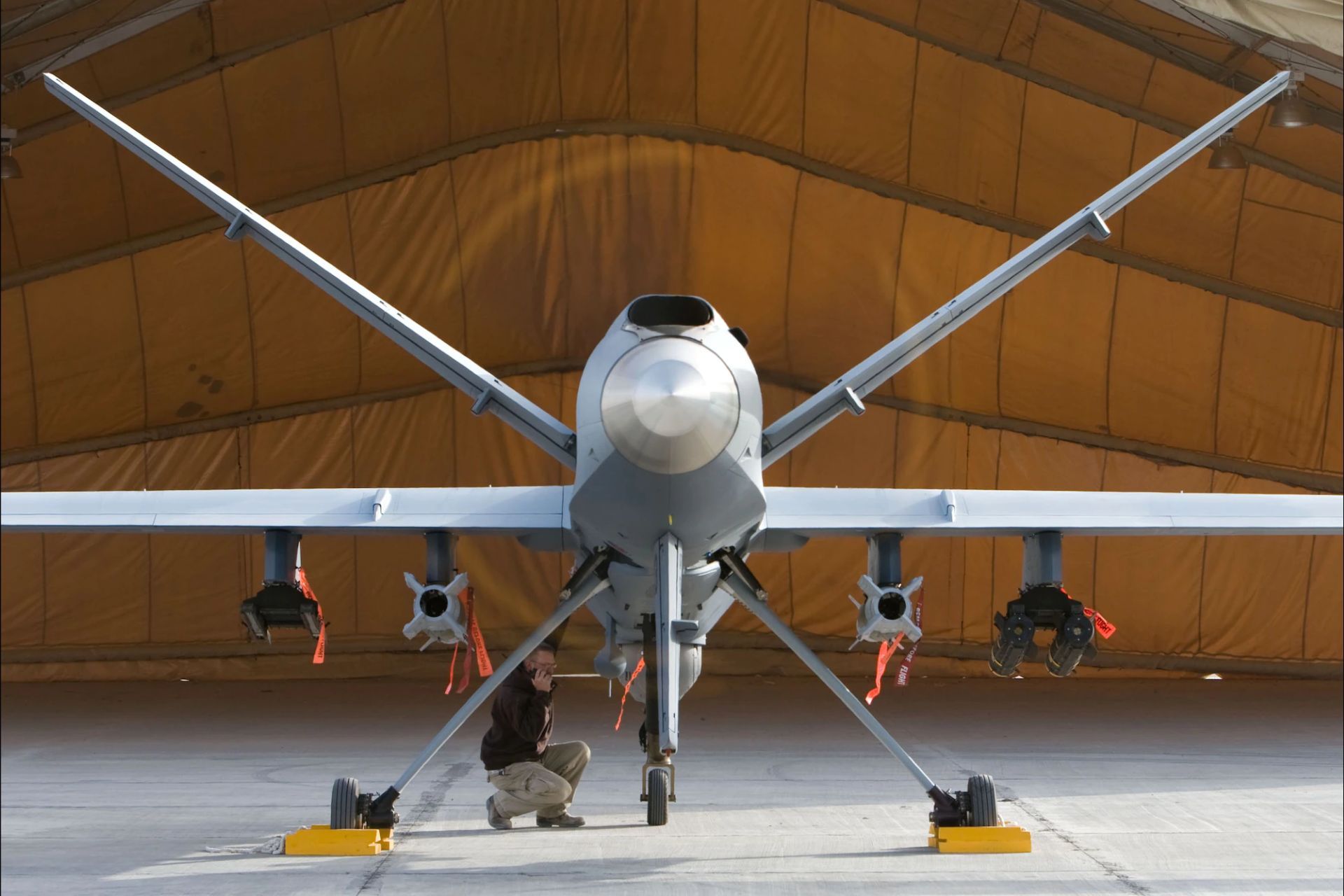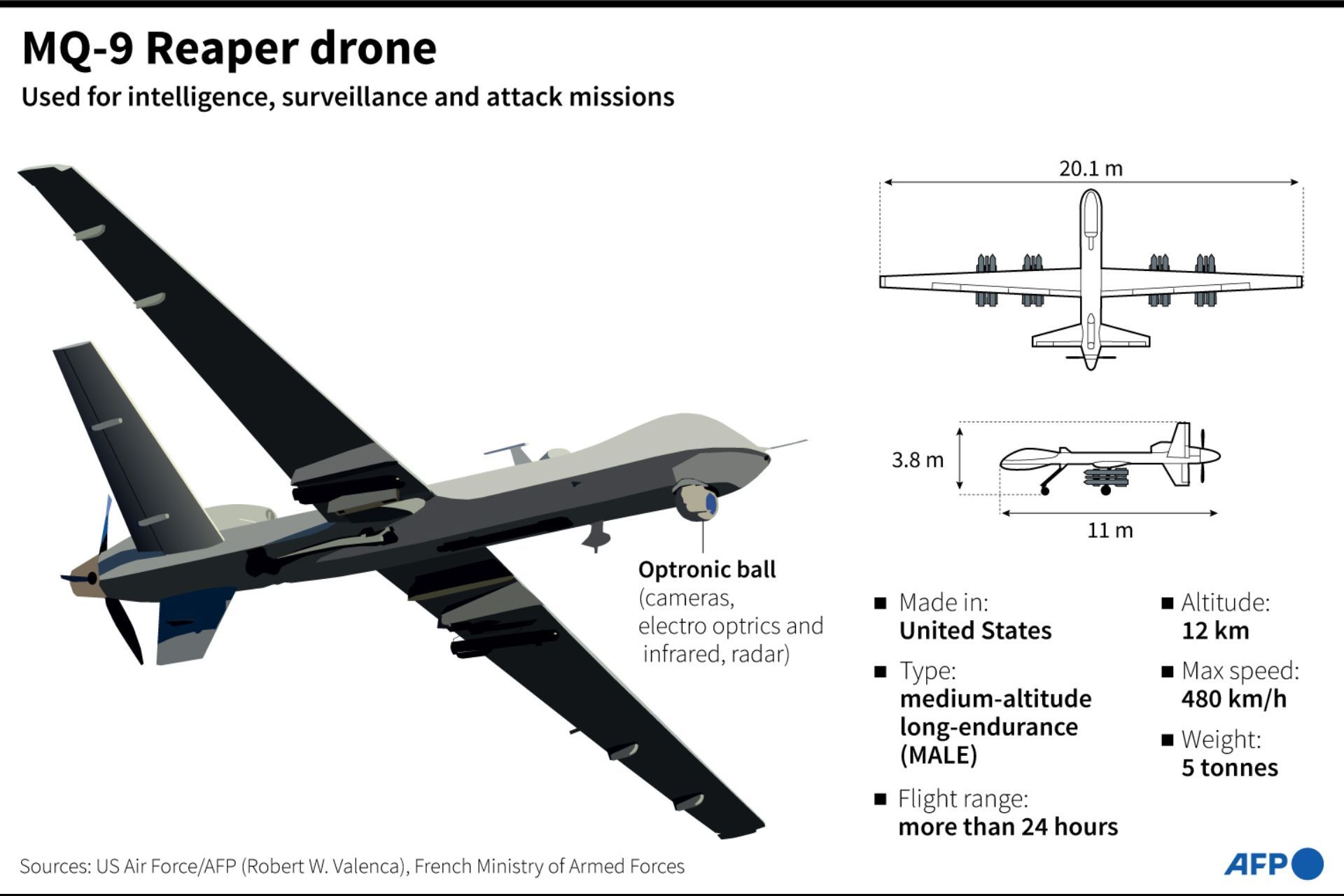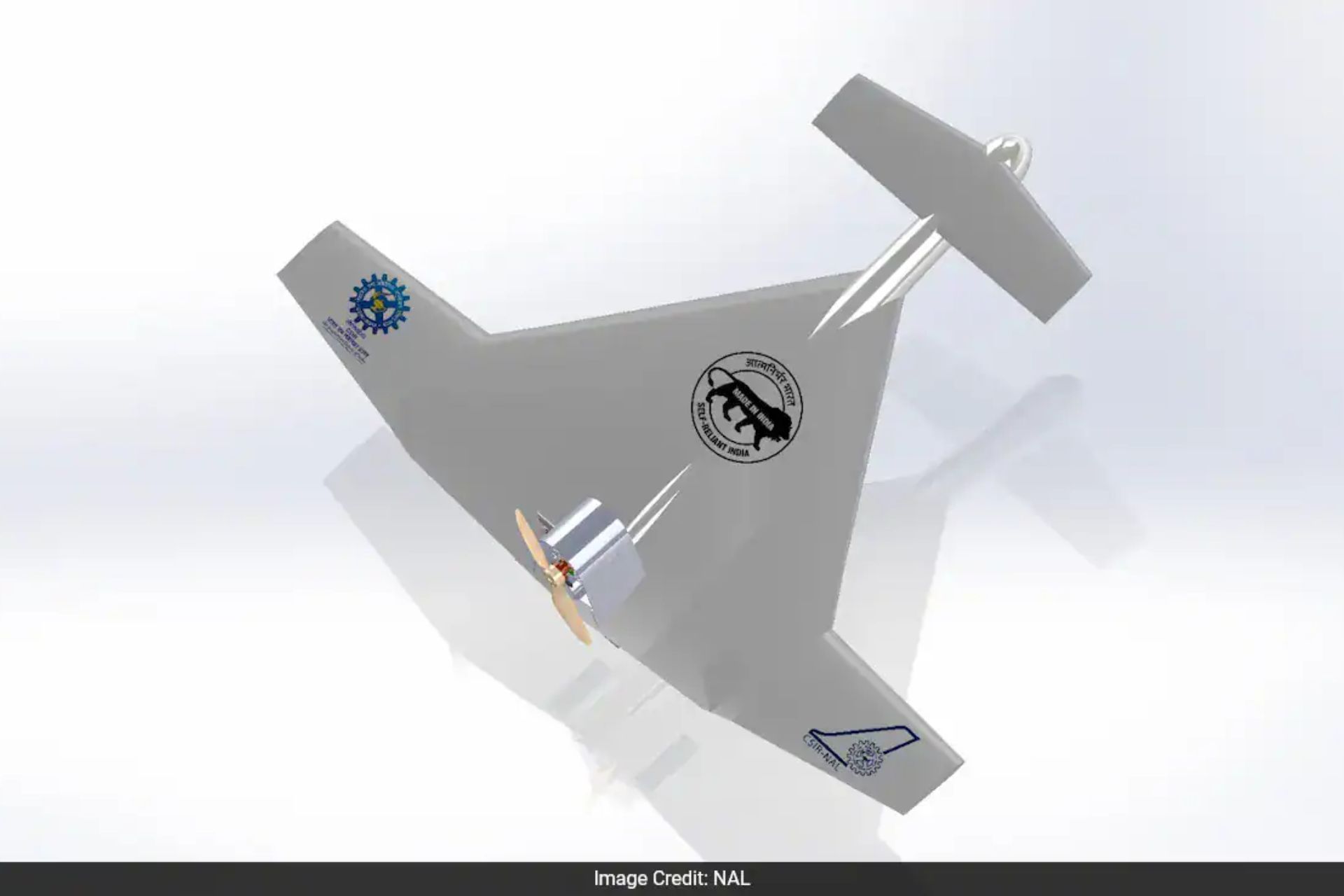Breaking News
India accelerates its focus on drones and is negotiating with the Americans for long-range UAVs.
India is accelerating the conclusion of an agreement with the United States to acquire 31 MQ-9B drones for its armed forces, with hopes of finalizing the deal as early as December. Manufactured by General Atomics, these drones will strengthen the country's arsenal at a time when Delhi perceives threats from China and Pakistan. India is striving to finalize the agreement for the 31 MQ-9B drones and hopes to sign this major contract by November-December.

MQ-9 SkyGuardian drone. (Picture source: General Atomics)
If all goes as planned, India could soon boast of having the deadly MQ-9B "hunter-killer" drones from the United States in its arsenal, with plans to expedite the agreement as early as November-December.
According to a report from the Times of India, discussions for these 31 drones "are now at an advanced stage," with 15 SeaGuardians allocated to the Navy and 8 Sky Guardians each to the Army and Air Force. The acceleration of the agreement between the United States and India comes at a time when New Delhi continues to face hostile neighbors like China and Pakistan. Beijing and New Delhi have been locked in a military standoff for five years now. Furthermore, China has also accelerated deliveries of Hong-4 and Wing Loong-II drones to Pakistan. In February, the United States approved the sale of 31 MQ-9B drones and related equipment to India at an estimated cost of $3.99 billion.
The "Hunter-Killer" Drones
The MQ-9B drone, manufactured by General Atomics Aeronautical Systems, is the first "hunter-killer" type unmanned aerial vehicle (UAV) designed for high-altitude, long-endurance surveillance. The drones are 11 meters long with a wingspan of over 22 meters. They have an endurance of more than 27 hours and can fly up to 50,000 feet. Additionally, they have a true airspeed of 240 knots and a payload capacity of 1,746 kg, including 1,361 kg of external provisions. The drone is equipped to carry multiple mission payloads, including electro-optical/infrared (EO/IR) sensors, Lynx multimode radars, multimode maritime surveillance radars, electronic support measures (ESM), laser designators, and various weapon sets and payloads. The MQ-9B can fly at 250 meters above the ground without the target being aware of its presence. Furthermore, these drones are also capable of operating in all weather conditions.
The drone is remotely piloted by a crew of two, consisting of a pilot and a crew member to operate the sensors and weapons.
According to the US Air Force, the Reaper is capable of deploying eight laser-guided AGM-114 Hellfire air-to-ground missiles, which have very precise anti-armor and anti-personnel engagement capabilities with minimal collateral damage.
The Reaper's predecessor, the Predator, became famous for its use during the Iraq and Afghanistan wars, where it caused a significant number of civilian casualties during "precision strikes," notes The Guardian. The RQ-1/MQ-1 Predator was retired by the US Air Force in 2017, with the Reaper becoming the primary unmanned aircraft for the military. Today, MQ-9B drones are used by the US Armed Forces, NASA, the UK's Royal Air Force, the Italian Air Force, the French Air Force, and the Spanish Air Force. Japan also introduced the MQ-9B Sea Guardian drones in April 2023.
Iranian General Qassem Soleimani was notably killed in a US drone strike in Iraq in January 2020, which was reportedly carried out by an MQ-9 Reaper drone. Another version of this drone, the MQ-9A Reaper, was used to kill Al-Qaeda leader Ayman al-Zawahiri in Kabul in 2022.

US MQ-9 reaper armed with 2 Guided Bomb Unit-12 Paveway II and 2 AGM-114 HellFire, 2 rack on left wing aren't armed ( Picture Source: US DoD)
India Has Long Awaited the MQ-9B Drones
Before India expressed its interest in purchasing these deadly "hunter-killer" drones, the Indian Navy had been operating two unarmed SeaGuardian drones on lease since 2020. The SeaGuardian drone is the maritime variant of the MQ-9B.
The deal has been in the works for over five years, and on June 15, 2023, the Ministry of Defense authorized the purchase of 31 MQ-9B drones from GA, including 15 Sea Guardians for the Indian Navy and eight Sky Guardians each for the Indian Army and Air Force, through the US Foreign Military Sales (FMS) route. This development came just before Prime Minister Narendra Modi's visit to Washington in June 2023 for his first state visit to the United States.
Following this, in September 2023, before the Modi-Biden meeting in New Delhi on the sidelines of the G20 summit, India sent an official request to the US government for the drones, submitting a detailed Letter of Request.
India is currently working to negotiate a better price for the drones, hoping to finalize the deal by the end of the calendar year. India hopes to bring the first 10 MQ-9Bs into service within a few years after the deal is signed, depending on GA's production capacity. The rest will arrive in batches every six months.
A Turning Point for India
With their long endurance, persistent surveillance, and strike capabilities, the MQ-9Bs can enhance the Indian Armed Forces' intelligence, surveillance, and reconnaissance (ISR) capabilities. The US Air Force notes that the drones are primarily used as "intelligence collection tools and secondarily against dynamic execution targets." Given its significant loiter time, wide-area sensors, multimode communications suite, and precision weapons, it offers a unique capability to perform strikes, coordination, and reconnaissance against high-value, fleeting, and time-sensitive targets, according to the USAF.
India is seeking to finalize a deal for 31 drones: 15 for the Navy, eight for the Army, and eight for the Indian Air Force.
According to the Times of India, these drones can help India conduct long-range surveillance and strikes in the Indian Ocean region and along land borders. Citing Indian military planners, India Today reported in January that the armed drones could help Indian forces "launch remote-controlled operations and surgical strikes, such as on terrorist hideouts in Pakistan-occupied Kashmir, and engage targets along the Himalayan borders with China."

US MQ-9 reaper presented by AFP when France receive Updated Reaper drone for surveillance and attack mission ( Picture Source: X.com/afp)
What About More Modest Drones?
The National Aerospace Laboratories (NAL) have announced that they are developing powerful indigenous Kamikaze drones, also known as loitering munitions. These robust unmanned aerial vehicles (UAVs) are designed to fly up to 1,000 kilometers with domestically made engines. Measuring 2.8 meters long with a wingspan of 3.5 meters, the Indian Kamikaze drone will carry a 25 kg explosive payload and weigh approximately 120 kg. The drone's endurance of around nine hours allows it to loiter for an extended period and identify the target before launching the suicide mission.
It is now believed that these drones are on the verge of becoming fully operational and are being integrated into Indian Army regiments. It is specified that these drones are entirely indigenous and will be equipped with a 30-horsepower Wankel engine developed by NAL. This robust machine will be capable of operating in GPS-denied environments, using India's NAVIC navigation system for guidance and target identification.
In Conclusion
India is focusing its military modernization on a technological vigilance basis, aiming to apply new "remote warfare" doctrines, marking a step forward in the balance of military power in the region. Indeed, India is today the theater of significant tensions on its borders with China and Pakistan.

First image of New indegenous Indian Loitering munition developped by NAL ( Picture Source: Nal)


























